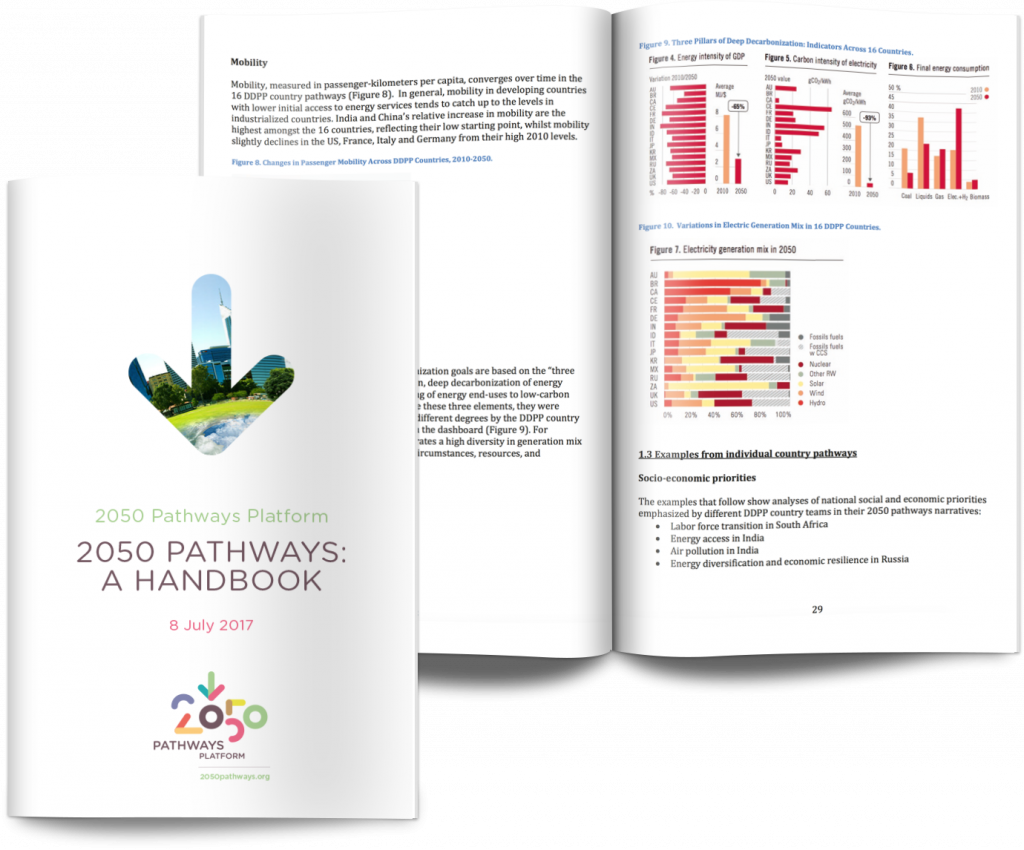by Jim Williams (SDSN) and Henri Waisman (IDDRI)
2017 July, 8
The 2050 Pathways Platform is an initiative that was launched in Marrakech at COP22. The objective of the Platform is to support countries, states, regions, cities and companies seeking to devise long-term, net zero-greenhouse gas, climate- resilient and sustainable development pathways. For further detail on the Platform, please visit the UNFCCC webpage. The 2050 Pathways Platform is supported by the French Ministry of Europe and Foreign Affairs and the European Climate Foundation.
This technical paper presents guidance on how to conduct 2050 pathways analyses. It suggests criteria, principles and building blocks for a successful development of pathways, as well as selected illustrations. It is intended to be read together with: Why Develop 2050 Pathways? This paper is under the responsibility of the 2050 Pathways Platform secretariat and does not commit the Platform members or its partners. Figures and illustrations including those from the Deep Decarbonization Pathways Project do not represent government positions.
TABLE OF CONTENTS
I. Introduction
Who should read this handbook?
What are the goals of this handbook?
What is beyond the scope of this handbook?
What are the contents of this handbook?
II. Common Framework for 2050 Pathways
III. Principles of 2050 Pathways 8
1. Meet both climate mitigation and socio-economic objectives
2. Use backcasting to guide the analysis
3. Describe the physical transformation required to meet 2050 objectives
4. Link the analysis to engagement and communications
5. Scope the issue before conducting the analysis
IV. Building blocks of 2050 Pathways
1. Narratives
2. Models
3. Dashboards
4. Visualizing the Process: How the Building Blocks Can Work Together
5. Using Dashboards to Coordinate Across Networks and Jurisdictions
6. Brief Summary of Key Steps in 2050 Pathways Process
V. Applying the Common Framework: Examples in Context
1. National Pathways
1.1. Deep Decarbonisation Pathways Project
1.2 Aggregate Results
2. Subnational Pathways
2.1 California
2.2. Washington
